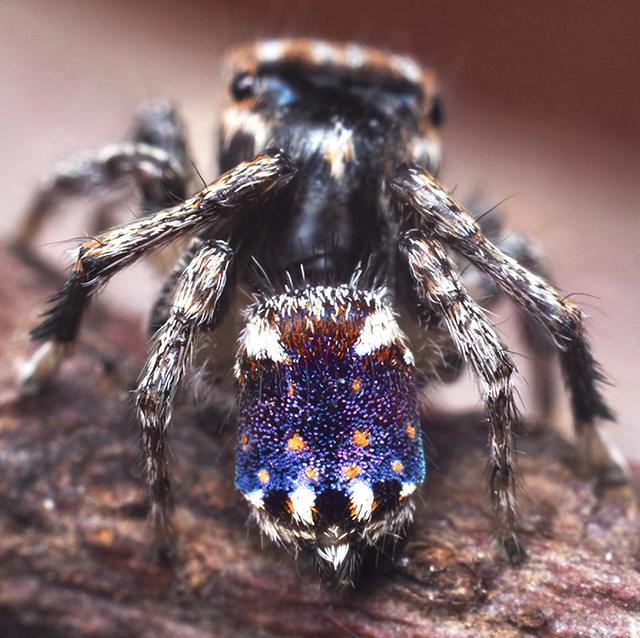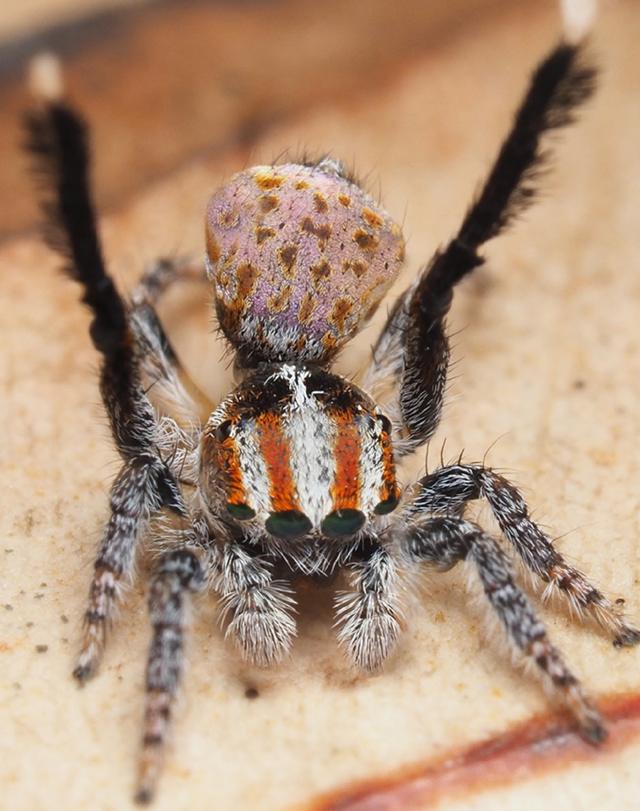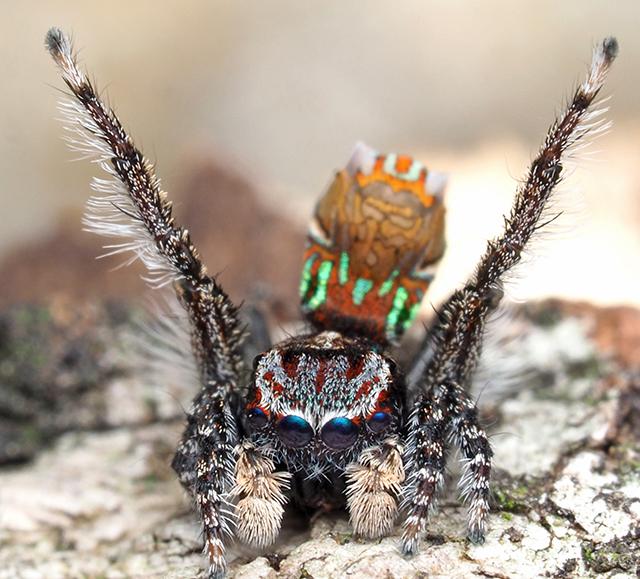Peacock spiders show more of their colours
- Published

Maratus azureus: It's common for the male spiders to wave their third pair of legs in a courtship dance

OK, a lot of people don't like arachnids. But c'mon, these little guys are simply stunning.
Seven new peacock spiders have been described in the journal Zootaxa, external.
And just like their cousins in the Maratus genus, they all live in Australia and they all feature those amazing iridescent colours that the males will flaunt during courtship.
The man behind the descriptions is Museums Victoria, external's Joseph Schubert, a 22-year-old peacock spider specialist.
He's now written up 12 of the 85 known species in this group. He often gets sent specimens to identify, but also conducts fieldwork.

Maratus constellatus: "The patterns on the abdomen look like Starry Night by van Gogh"

The names of the new species are Maratus azureus, Maratus constellatus, Maratus laurenae, Maratus noggerup, Maratus suae, Maratus volpei, and Maratus inaquosus. Most are from Western Australia,
"My favourite species would have to be Maratus constellatus," he said.
"I ventured all the way to Kalbarri to find this species which is about a seven-hour drive north of Perth. The patterns on the abdomen to me just look so much like Starry Night by van Gogh, hence the name constellatus which means starry in Latin.
"A few of the spiders in this paper were named after the people who had discovered them. A lot of the species are actually discovered by citizen scientists who'd documented the locality data and taken photos of the spiders and sent images to me. Considering how many peacock spider species have been discovered in the past few years, I certainly think that there are more out there to be found."

Maratus laurenae: Peacock spiders are tiny. Just a few mm in length

Peacock spiders are generally very small, about the size of a grain of rice. It's the males that sport the ostentatious colouring; females have a more mottled look made up of browns, blacks and beiges.
Males will wave their abdomens and legs during a courtship dance. Some even have flaps that can be extended like a fan - hence the association with peacock birds.
There has been a flurry of new species discoveries in recent years, and given their popularity it's likely many more previously unrecognised species will be identified in the future as people go looking for them.
Allow YouTube content?
This article contains content provided by Google YouTube. We ask for your permission before anything is loaded, as they may be using cookies and other technologies. You may want to read Google’s cookie policy, external and privacy policy, external before accepting. To view this content choose ‘accept and continue’.

Maratus volpei: There are now 85 species of peacock spider described in the literature


Maratus suae: It's the males that have all the exotic colours


Maratus noggerup: Peacock spiders are found in Australia
